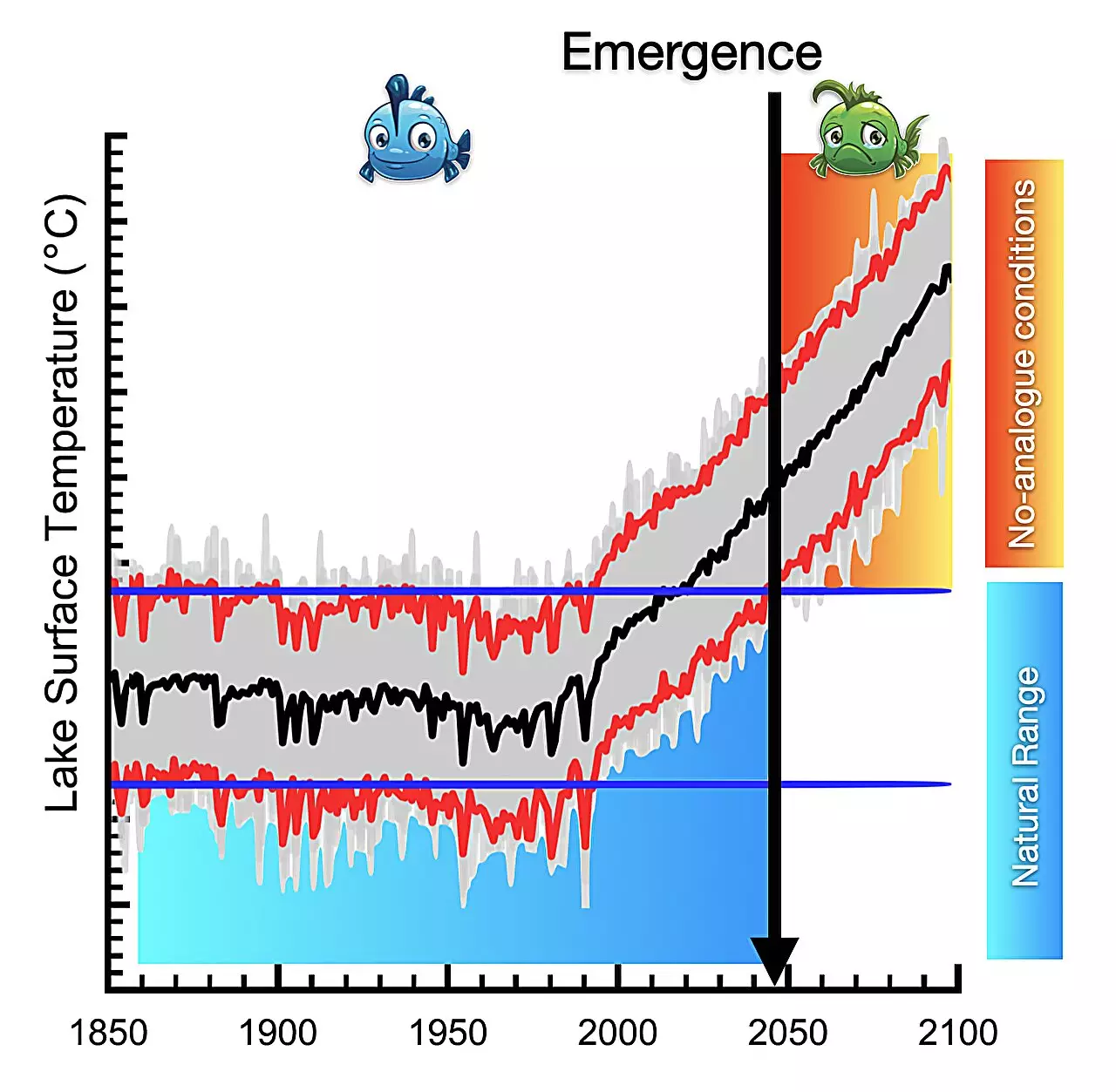Lakes, teeming with ecological importance, are now at a critical juncture as global temperatures continue to rise. New research brings to light the disheartening reality that this vital freshwater resource is on the brink of experiencing unprecedented thermal shifts that will alter its ecosystems drastically. A study published in the esteemed journal Nature Geoscience highlights that, if contemporary trends in anthropogenic warming persist, lakes around the globe could soon confront conditions far removed from those found in their historical climate variability. This research, conducted by an international team of limnologists and climate scientists, underscores an urgency that demands attention from stakeholders worldwide.
Advanced Modeling Techniques Reveal Potential Catastrophes
The study utilizes an advanced climate simulation model known as the Community Earth System Model (CESM2), capable of forecasting lake temperatures from the mid-19th century to the year 2100. This pioneering approach — which synthesizes the complex interactions between lake systems and atmospheric variables — is the first of its kind and reflects a shift towards more nuanced climate modeling. By employing an ensemble of 100 projections rather than a single trajectory, researchers can account for variations in natural climate patterns while isolating the impacts of human-induced climate change. This nuanced methodology is crucial for accurately predicting lake temperature trajectories and understanding the broader implications of climate change.
Understanding No-Analog Conditions
One of the most alarming revelations of this research is the emergence of “no-analog conditions,” a term that refers to climatic scenarios that lack historical precedents. These conditions threaten the delicate balance of lake ecosystems, as fish and other aquatic species may find it increasingly difficult to adapt or migrate in response to such rapid changes. According to Dr. Lei Huang, the lead author, the inevitability of these conditions should serve as a wake-up call. The study projects that many lakes will face these extreme changes by the end of this century, with tropical lakes being the first to experience this alarming phenomenon when global warming exceeds the critical threshold of approximately 2.4°C above pre-industrial levels.
Tropical vs. High-Latitude Lakes: A Divergent Path
The consequences of warming manifest differently across various geographic locations. In tropical regions, lakes, which serve as hubs of biodiversity, are set to experience the impacts of climate change more acutely. The study notes that these ecosystems face immediate threats as warming also penetrates subsurface layers more rapidly due to frequent mixing events. In contrast, high-latitude lakes are somewhat shielded from surface warming via a natural stratification process. This difference in thermal dynamics raises critical questions about how various ecosystems will cope and adapt — or fail to adapt — to these new conditions.
The Future of Lake Biodiversity: A Cause for Concern
The ramifications of such “no-analog climates” extend far beyond temperature shifts; they hold the potential to disrupt entire ecosystems. Unlike terrestrial or marine life, lake organisms tend to have a limited capacity to relocate to more favorable habitats. This vulnerability intensifies the risk of ecological collapse as species struggle to cope with the warming water. With lakes acting as crucial suppliers of freshwater and biodiversity, the potential disruptions could have severe implications for both local communities and global resources.
Prioritizing Adaptation and Mitigation Strategies
In light of these alarming findings, understanding when these no-analog conditions will emerge is not just an academic exercise; it is essential for developing targeted adaptation and mitigation strategies. Researchers, policymakers, and environmental organizations must collaborate to formulate action plans that will help protect these vital ecosystems from becoming unrecognizable. Public awareness and proactive measures could serve as significant counterforces against the escalating threat of climate change on freshwater resources.
This study serves as an urgent reminder that the time for action is now. The window for implementing effective strategies to safeguard our lakes is closing, and it is imperative that we pay heed to these warnings before they become a reality we can no longer rectify.

